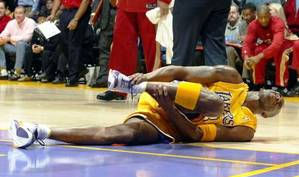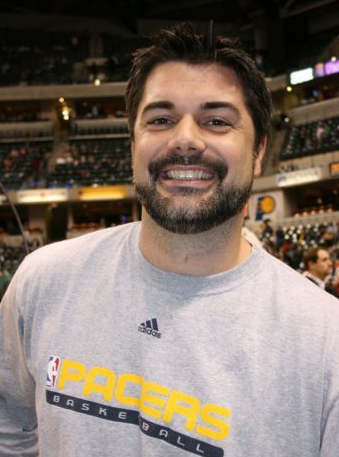by Art Horne

Below is an excerpt from Barefoot in Boston examining why some shoes may be good while others are just plain bad.
_____________________________________________________________________
So what do “fancy” shoes have that ordinary shoes do not?
The answer may be found in a 2001 study by McKay. Although McKay’s group did not set out to determine the manufacturing differences between lower end and high end shoes, their findings did point to one feature within many athletic shoes that may very well be to blame. In this study researchers sat courtside and watched over 10,000 recreational basketball participants as they played to determine the rate of ankle injury and examine risk factors of ankle injuries in recreational basketball players. Each participant completed a questionnaire which included questions related to: age, sex, height, weight, protective equipment (ankle brace, mouth guard, etc), shoe type (cut low, med, high), age of shoes, whether the participant performed a warm-up prior to playing, and of course questions identifying their injury history.
After analyzing the data, three risk factors emerged:
1. Previous ankle sprain – those athletes with a previous sprain were almost 5 times more likely to sprain again.
2. Players who did not stretch prior to games were 2.6 times more likely to injure their ankles then those that did.
3. Players wearing air cells in the heels were 4.3 times more likely to injure an ankle compared to those with no air cells in their heels. (It may be hypothesized that air cells located in the heels of basketball shoes decrease rear foot stability, which may in turn increase the risk of ankle injury.)
“So let me get this straight; shoes with air cells, which were placed within the shoe to help the athlete absorb shock or jump higher actually increased their risk of injury?”
I think it is also interesting to note that there appears to be a protective mechanism to stretching prior to playing and in fact the authors note, “a relation has been shown between tightness of the calf muscles and ankle injuries suggesting that tightness of the calf muscles may be responsible for ground contact of the feet in the supinated position, with a high risk of ankle sprain.” Now I’m not the smartest guy in this metaphorical room, but anyone walking around in traditional basketball shoes all day is sure going to experience gastroc/soleus tightness via the exceptionally built up heel height compared to forefoot sole height.
_____________________________________________________________________
I remember reading this study when I first took over the care and performance training for our basketball team and realized that prevention of basketball injuries and resultant time lost due to injury meant so much more than standing on a buso ball three times a week with their eyes closed. If I was going to have a true impact on preventing lower extremity injuries and pain I was going to have to get into our athlete’s lives – literally. The following are recommendations and actions which we have taken in an effort to curb ankle trauma ( the leading cause of injury according to Randall Dick’s 2007 study, Descriptive Epidemiology of Collegiate Men’s Basketball Injuries: National Collegiate Athletic Association Injury Surveillance System, 1988-1989 Through 2003-2004).
1. STOP BUYING SHOES WITH AIR FILLED CELLS! There is really two pieces in play here. One - the fact that you’re much higher off the ground inherently makes “tipping over” much easier (ever walk behind a girl wearing stilettos on a Saturday night and witness her ankle flop about? Makes me cringe just thinking about it) and two – add an unstable surface(a pocket full of air – may as well just duck tape a dynadisc to the bottom of your shoe) to those stilettos and you have the perfect design for the inversion ankle sprain.
2. STRETCH: getting athletes to do this for the 10 minutes prior to practice is easy since either the athletic trainer or strength coach usually is barking orders, but getting athletes to understand the importance of ankle mobility and dorsiflexion and then addressing it throughout the day is a challenge all by itself. Providing slant boards or other assistive devices in their locker area or lounge provides additional opportunities for athletes to stretch during the day. If you want to address this problem you must first address the environment and buy placing a few slant boards in the athletic training room, weight room and locker/lounge areas will surely remind them that this is an important concept.
3. ADDRESS PREVIOUS INJURY: Previous injury always predicts future injury. This should be addressed on day one or during your annual pre-participation screening times. Any athlete with prior injury, at least in my opinion, should be further evaluated that day or within the first week and have their limiting factor addressed. These athletes are going to get hurt again – if you don’t have time to address their problem now, how are you going to have time when they are injured and out for weeks?
4. GET INTO THEIR LIVES ON A DAILY BASIS:
a. Encourage your athletes to stop wearing high heels during the day – yes, that’s you big fella. Basketball athletes in general, typically enjoy wearing basketball sneakers during the day in addition to their time on the court. If you’re ever going to address gastroc/soleus tightness or loss of ankle mobility you have to take away what’s shortening them. Your ten minute stretch matched up against a day heel elevation doesn’t stand a chance.
b. Get them out of their shoes altogether. Obviously this is difficult to and from classes and on the court, but during strength training time be sure to take the opportunity to get the guys moving and grooving without the shoes, ankle tape and braces. You’ll find that the body has a way to mobilize a stiff ankle all by itself if you just put them in positions that allow for these motions without restrictions.
Learn more about going barefoot, training barefoot and how incorporating a few barefoot strategies into your own training program will help resolve your current injury woes by reading BAREFOOT IN BOSTON.






